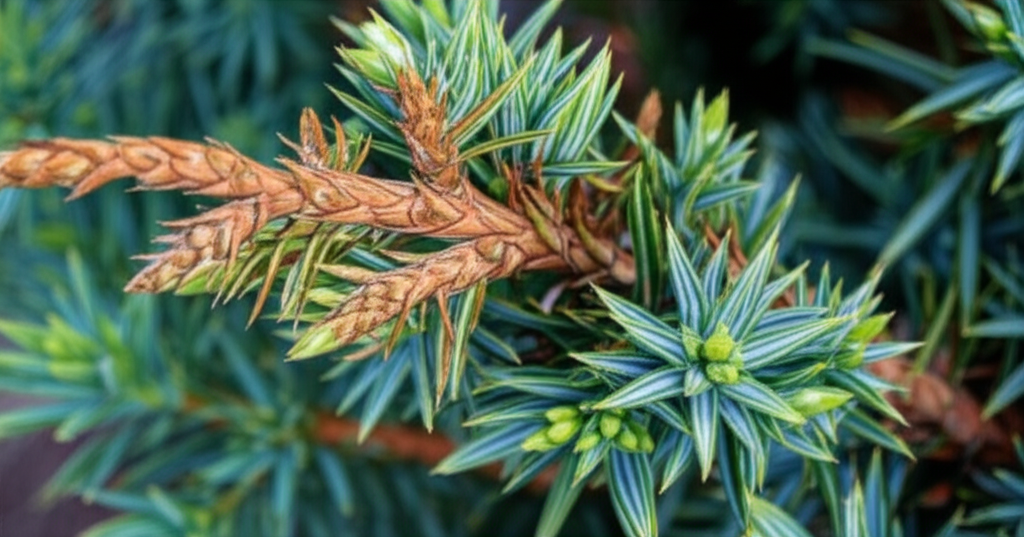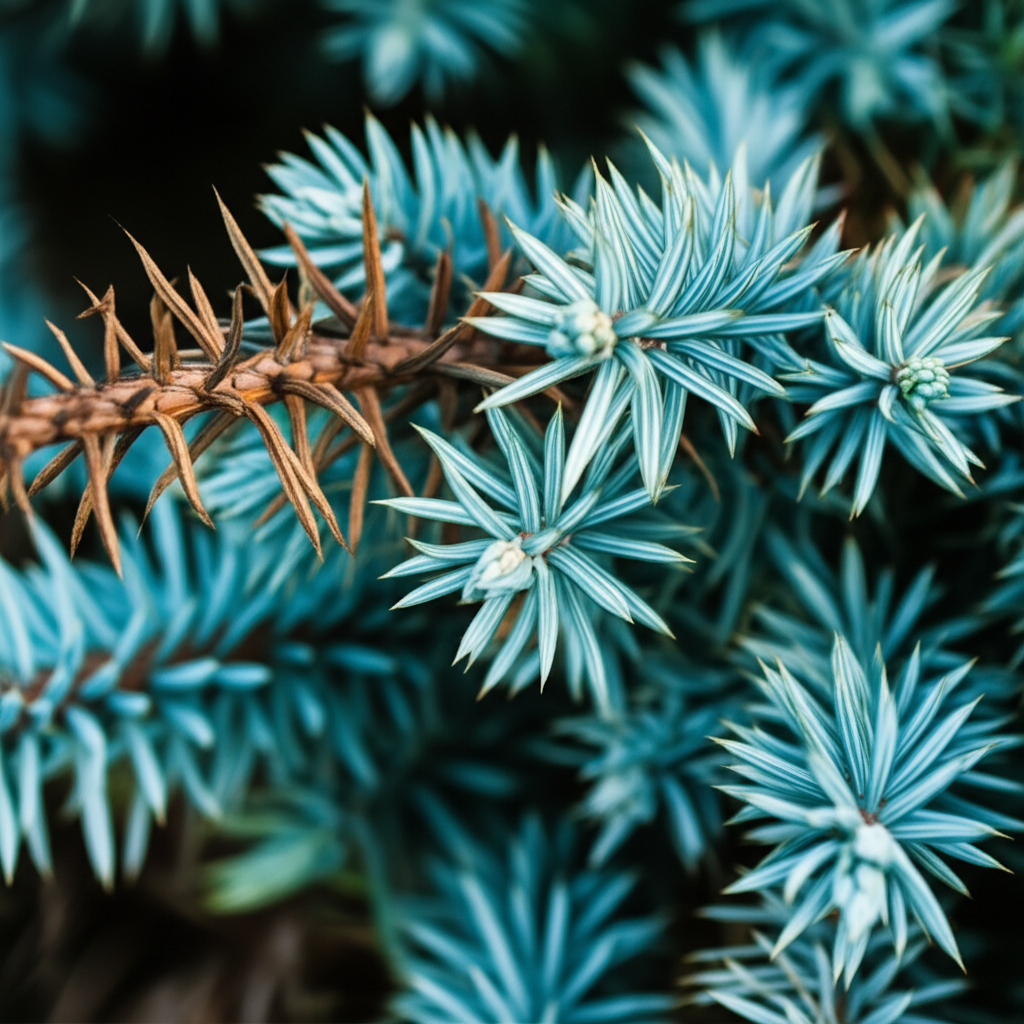Blue Star Juniper Frost Damage Repair: Stunning Fixes for a Resilient Garden

Can your beloved Blue Star Juniper recover from a harsh frost? As spring awakens and we assess the winter’s toll, seeing those once vibrant blue-green needles turned brown and brittle can be disheartening. But before you despair, know that frost damage, while visually alarming, is often treatable, allowing your Blue Star Juniper to bounce back with stunning resilience. Understanding how to properly address frost-affected junipers is crucial not only for their immediate recovery but for their long-term health, ensuring your garden continues to showcase their unique architectural beauty and year-round appeal.
Quick Answer Box
Yes, Blue Star Juniper frost damage can often be repaired with proper care and patience. The key is to prune away dead foliage after the danger of frost has passed and to provide consistent moisture and appropriate nutrition to encourage new growth.
What is Blue Star Juniper Frost Damage and Why It’s Important in Gardening
Blue Star Juniper frost damage refers to the injury sustained by the plant’s foliage and sometimes younger stems when exposed to freezing temperatures. Junipers, while generally hardy, are susceptible to frost, especially new growth or plants that haven’t fully acclimated to winter conditions. This damage manifests as browning, wilting, or crispy-looking needles. Understanding frost damage is vital because it directly impacts the plant’s ability to photosynthesize, its aesthetic appeal, and its overall vigor. Prompt and correct intervention can mean the difference between a recovering plant and one that succumbs to the stress.
Quick Recommendations or Key Insights about Blue Star Juniper Frost Damage Repair
Wait to prune: Resist the urge to prune immediately after a frost; wait until new growth appears to distinguish between damaged and healthy tissue.
Water wisely: Ensure the soil remains consistently moist but not waterlogged, especially during dry periods following frost.
Fertilize cautiously: Avoid fertilizing stressed plants; wait until new growth is evident before applying a balanced, slow-release fertilizer.
Mulch generously: Apply a layer of organic mulch around the base to help regulate soil temperature and retain moisture.
Patience is paramount: Recovery can take time; observe your juniper closely for signs of new growth.
Detailed Breakdown of Blue Star Juniper Frost Damage Repair
The Science Behind Frost Damage on Blue Star Junipers
Blue Star Junipers (Juniperus squamata ‘Blue Star’) are evergreen conifers known for their compact, mounding habit and striking silvery-blue foliage. Like most plants, their cells contain water. When temperatures drop below freezing, the water within plant tissues can freeze and expand, forming ice crystals. These ice crystals can physically rupture cell walls, causing irreversible damage. Furthermore, freezing can disrupt the plant’s water transport system and lead to dehydration. For evergreens like the Blue Star Juniper, the damage is often most visible on the needles, which are the primary sites of photosynthesis and transpiration. The outer layers of the needles are typically more exposed and thus more vulnerable to rapid temperature fluctuations.
Practical Applications in the Garden: Assessing and Treating Frost Damage
1. Initial Assessment (Post-Frost):
After a frost event, it’s crucial to observe your Blue Star Juniper. Don’t be alarmed by browning needles; this is a common reaction. The key is to determine the extent of the damage. Gently bend a needle. If it snaps easily and is brittle, it’s likely dead. If it’s pliable, even if discolored, there’s a chance it will recover. Look for signs of damage on younger, more tender shoots and buds as well, as these are often the most susceptible.
2. The Waiting Game: When to Prune
This is perhaps the most critical step. Do not prune immediately after a frost. The damaged needles can actually serve as a protective layer for the underlying living tissue and buds. Pruning too early can expose vulnerable new growth to further damage or stress.
The Rule of Thumb: Wait until the threat of frost has completely passed for your region (typically after your last average frost date).
Look for Signs of Life: The best indicator that it’s time to prune is the emergence of new, green growth. If you see healthy new buds or shoots appearing, you can confidently begin to prune away the damaged sections.
3. Pruning Techniques for Frost-Damaged Junipers:
Once you’ve determined it’s safe to prune, use clean, sharp pruning shears or loppers.
Cut Back to Healthy Tissue: Identify the browned, crispy needles and trace the stem back to where you see green tissue or a healthy bud. Make your cut just above this point.
Address Seeping Resin: Junipers often “bleed” resin when cut. This is a natural defense mechanism. While it can be messy, it’s generally not harmful. You can use rubbing alcohol on your tools between cuts to keep them clean and prevent disease spread.
Shape and Form: As you prune, you can also lightly shape the juniper to maintain its desired form. However, focus primarily on removing the dead material. Avoid cutting back into old, bare wood where there are no visible signs of green, as junipers often struggle to resprout from such areas.
Common Mistakes to Avoid When Repairing Frost Damage
Pruning too early: As mentioned, this is the most common mistake. It can hinder recovery.
Over-watering: While moisture is important, waterlogged soil can lead to root rot, especially on a stressed plant. Ensure good drainage.
Fertilizing a stressed plant: Applying fertilizer to a plant that is struggling to recover from frost damage can actually do more harm than good. It can stimulate new growth that is too tender to withstand subsequent temperature fluctuations or overwhelm the plant’s compromised systems.
Over-pruning: Removing too much foliage at once, even if it’s damaged, can shock the plant and impede its ability to recover. Be conservative in your initial pruning.
Assuming the plant is dead: Blue Star Junipers are remarkably resilient. Even if a significant portion appears damaged, wait patiently for signs of new growth before giving up.
Expert Tips or Pro Insights for Maximizing Recovery
Hydration Therapy: After pruning, ensure the juniper receives adequate, consistent watering. Deep watering is more beneficial than frequent shallow watering. This helps the plant establish a strong root system and supports new growth.
The Power of Mulch: Apply a 2-3 inch layer of organic mulch (like pine bark or shredded cedar) around the base of the juniper, keeping it a few inches away from the main trunk. Mulch helps conserve soil moisture, suppress weeds, and regulate soil temperature, creating a more stable environment for root recovery.
Gentle Feeding (When Ready): Once you observe consistent new growth, you can consider a light feeding. Use a balanced, slow-release fertilizer formulated for evergreens. Follow the package directions carefully to avoid over-fertilization. A good time to fertilize is in early spring, before significant new growth begins, or in mid-spring as growth becomes more active.
Pest and Disease Watch: Stressed plants can become more susceptible to pests and diseases. Keep an eye out for any unusual insect activity or signs of fungal infections. Address any issues promptly with appropriate organic or chemical controls as needed.
Companion Planting: Consider planting resilient, low-growing groundcovers or flowers around your Blue Star Juniper. These can help protect the soil from extreme temperature fluctuations and add visual interest as the juniper recovers.
Seasonal or Climate Considerations for Blue Star Juniper Frost Damage
Spring: This is when frost damage is most commonly assessed. The key is to manage the recovery process as temperatures stabilize. Early spring frosts can be particularly damaging to newly emerged growth.
Summer: If the juniper has recovered well, summer growth will be robust. However, prolonged dry spells during summer can still stress a recovering plant, necessitating consistent watering. Ensure adequate moisture, especially for plants that experienced significant damage and are putting on new growth.
Autumn: As temperatures begin to drop in fall, young, vigorous growth that emerged post-frost might be more vulnerable to early fall frosts. If unseasonably cold snaps are predicted, consider protecting newly developed growth with frost cloths or burlap wraps.
Winter: Blue Star Junipers are generally hardy to USDA Zones 4-8. However, plants in the colder end of this range (Zone 4-5) or those recently planted may experience more severe frost damage. In these areas, providing winter protection, such as a burlap wrap or a layer of mulch banked around the base, can help mitigate frost injury.
Buying Guide: Choosing a Healthy Blue Star Juniper
When purchasing a Blue Star Juniper, whether to replace a damaged one or to expand your garden, consider these factors:
Foliage Color: Look for a vibrant, consistent silvery-blue color. Avoid plants with significant browning or yellowing before you even get them home.
Plant Form: The classic Blue Star Juniper has a dense, mounding shape. Ensure the plant is well-branched and not leggy or sparse, unless it’s a specific cultivar known for a different growth habit.
Root Health: If possible, check the root ball. Healthy roots should be white or light tan, not dark brown or mushy. Avoid plants that are severely root-bound (roots circling tightly around the pot).
Pest and Disease Check: Inspect the foliage and stems for any signs of pests (like spider mites or aphids) or diseases. Healthy plants are the best defense against future problems.
* Origin: Purchase from reputable nurseries or garden centers. They are more likely to offer healthy, well-cared-for specimens.
FAQ Section for Blue Star Juniper Frost Damage Repair
Q1: How long does it take for a Blue Star Juniper to recover from frost damage?
A1: Recovery time varies depending on the severity of the damage and the plant’s overall health. It can take anywhere from a few weeks to an entire growing season to see significant new growth and a return to its full aesthetic appeal. Patience is key.
Q2: Can I fertilize my Blue Star Juniper if it has frost damage?
A2: It’s best to wait until you see clear signs of new, healthy growth before fertilizing. Fertilizing a stressed plant can hinder its recovery. Once new growth is established, use a balanced, slow-release fertilizer.
Q3: What if the entire Blue Star Juniper looks dead after a frost?
A3: Even if the entire plant appears brown and brittle, it’s worth waiting. Scratch a small section of the bark on a stem with your fingernail or a clean knife. If you see green tissue underneath, the plant is still alive and may recover. Continue to water as usual and prune away dead foliage in late spring.
Q4: Should I water my Blue Star Juniper after a frost?
A4: Yes, especially if the soil has dried out. Consistent moisture is important for recovery, but ensure the soil drains well to avoid waterlogging, which can cause root rot. Water deeply but less frequently.
Q5: Can I use a frost cloth or cover to protect my Blue Star Juniper from future frosts?
A5: Yes, frost cloths or burlap wraps can be very effective in protecting vulnerable plants, especially young ones or those in colder climates, from late spring frosts or early fall freezes. Ensure the covering extends to the ground to trap warmth from the soil.
Conclusion for Blue Star Juniper Frost Damage Repair
Restoring a frost-damaged Blue Star Juniper is a rewarding gardening endeavor that showcases the resilience of nature. By understanding the science behind frost injury, practicing patient assessment, and employing the correct pruning and aftercare techniques, you can help your juniper not only survive but thrive. Remember the crucial steps: wait for new growth before pruning, provide consistent moisture and mulch, and avoid over-fertilizing stressed plants. With these expert insights, you’re well-equipped to mend any frost-induced damage and ensure your Blue Star Juniper continues to be a stunning, vibrant feature in your garden for years to come.


